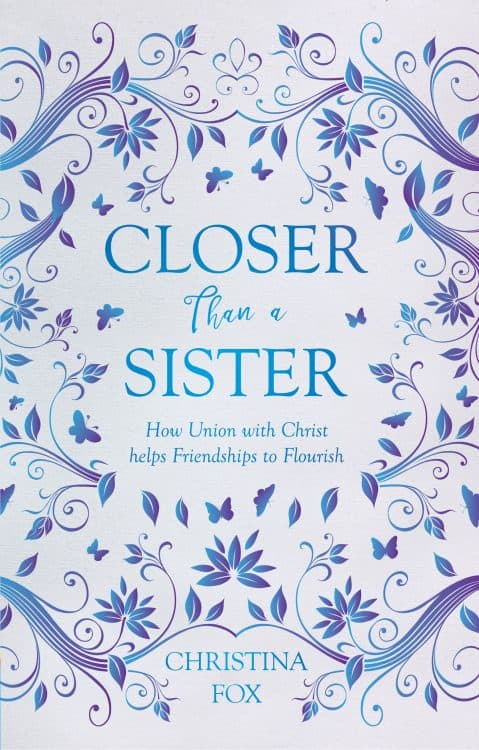⏱️ Estimated Reading Time: 7 min read
When you think of women in the Bible, who comes to mind? Perhaps you think of Mary, Jesus’ mother. Or maybe Esther, the queen who saved her people from destruction. There’s also Ruth, the young widow who left the land and people she knew to be with her mother-in-law. We remember these women because of their important role in redemptive history.
But there are two women who are only mentioned in one place, and their story isn’t romantic, brave, or remarkable. Rather, they are included in Scripture as an example of a problem in the church. Who are these women? Euodia and Syntyche.
Conflict in the Church
These two women make an appearance in the book of Philippians. Paul admonishes them to get along, “I entreat Euodia and I entreat Syntyche to agree in the Lord. Yes, I ask you also, true companion, help these women, who have labored side by side with me in the gospel together with Clement and the rest of my fellow workers, whose names are in the book of life” (Philippians 4:2-3). Their conflict was serious enough to cause Paul to point it out to the whole church at Philippi to read. And for every Bible reader after that as well.
These two women served with Paul in ministry. He urged them to do what he wrote in Philippians 2:2, “complete my joy by being of the same mind, having the same love, being in full accord and of one mind.” He wanted them to remember their unity in Christ and with each other. He also asked some unnamed “true companion” to help these women resolve their conflict.
This passage in Philippians is not the only one in Scripture that mentions conflict in the church. In Galatians 2, Paul mentions a conflict he had with Peter, “But when Cephas (Peter) came to Antioch, I opposed him to his face because he stood condemned. For before certain men came from James, he was eating with the Gentiles; but when they came he drew back and separated himself, fearing the circumcision party. And the rest of the Jews acted hypocritically along with him, so that even Barnabas was led astray by their hypocrisy” (vs. 11-13). There was also some disagreement between Paul and Mark in Acts 15. Paul did not want Mark to join them on a missionary journey because he had abandoned them on a previous trip. So Paul and Silas went one way and Mark and Barnabas another. In 1 Corinthians 3, Paul references a division in the Corinthian church where some were saying they followed Paul and others Apollos, “For while there is jealousy and strife among you, are you not of the flesh and behaving only in a human way? For when one says, “I follow Paul,” and another, “I follow Apollos,” are you not being merely human?” (vs. 3-4).
Conflict Today
Perhaps as you read through these examples of church conflict, you were reminded of conflicts you’ve seen in churches of which you’ve been a part. Perhaps your mind recalled memories of church divisions, of people who have not spoken to each other in years, and of members who have left the church due to wounds inflicted by other believers. If you’ve been in the church any length of time, you’ve probably seen fellow church members, whom you love, hurt one another. You’ve seen people draw lines in the sand and take sides.
The truth is, conflict in the church is just as real today as it was in Paul’s day.
I believe that is why Paul spent so much time in his letters to the churches talking about unity in Christ. Through faith in Christ’s sacrifice for sin, we are united to Him. Paul often referred to this unity as being “in Christ.” It is through this unity that we receive all the benefits of what he accomplished for us through His life, death, and resurrection. “I have been crucified with Christ. It is no longer I who live, but Christ who lives in me. And the life I now live in the flesh I live by faith in the Son of God, who loved me and gave himself for me” (Galatians 2:20). Our union with Christ is fundamental to our faith, for apart from that union, we can do nothing (John 15:5).
It is also through this union we are united to others in the church. Paul used multiple metaphors in his letters to describe the church. One image is that of a house: “So then you are no longer strangers and aliens, but you are fellow citizens with the saints and members of the household of God, built on the foundation of the apostles and prophets, Christ Jesus himself being the cornerstone, in whom the whole structure, being joined together, grows into a holy temple in the Lord. In him you also are being built together into a dwelling place for God by the Spirit” (Ephesians 2:19-22). Another is that of a human body: “For just as the body is one and has many members, and all the members of the body, though many, are one body, so it is with Christ. For in one Spirit we were all baptized into one body—Jews or Greeks, slaves or free—and all were made to drink of one Spirit” (1 Corinthians 12:12-13).
As believers, we are united to one another through the blood of Christ. We’ve been adopted into the family of God making other church members our brothers and sisters in the Lord. These relationships even supplant familial ties (Luke 14:26, Matthew 12:48-50). This is why in some churches, members refer to each other as ‘Brother ____’ and ‘Sister ____.’ “I will be a father to you, and you shall be sons and daughters to me, says the Lord Almighty” (2 Corinthians 6:18).
That’s why the conflicts we have with one another in the church are so serious. It breaks our unity, the unity our Savior died to create. It divides God’s family. It also mars our gospel influence to the world around us. In Jesus’ High Priestly Prayer in John 17, He prayed that the union of His people would show the world who God is and his love for His people (vs. 23). Our love and unity for one another is the mark of a Christian. It is how the world knows we belong to Christ. Francis Schaeffer called this love for one another in the church “the final apologetic.” He also says, “We cannot expect the world to believe that the Father sent the Son, that Jesus’ claims are true, and that Christianity is true unless the world sees some reality of the oneness of true Christians.”[1]
And that’s why Paul pointed out the conflict between Eudia and Syntyche. Their conflict harmed Christian unity and the gospel witness in Philippi.
The church belongs to Christ. We must make every effort to maintain the peace and unity of what Christ died to create. In the case of these two now famous women, it meant Paul’s admonishment and the intervention of someone else to help them resolve their conflict. We too must take conflicts and discord seriously in our churches. We must take it seriously and go to great lengths to “agree in the Lord.” We can’t ignore it or wish it away. We must help one another live out the gospel in our disagreements, loving one another as Christ loved us and gave Himself up for us. May we strive to “walk in a manner worthy of the calling to which you have been called, with all humility and gentleness, with patience, bearing with one another in love, eager to maintain the unity of the Spirit in the bond of peace” (Ephesians 4:1-3).
If you enjoyed this article please consider picking up Christina’s new book Closer Than a Sister: How Union with Christ helps Friendship to Flourish (Christian Focus, 2017).
References
[1] Schaeffer, Francis. The Mark of the Christian (Downers Grove, IL: InterVarsity Press, 1970), p. 27.




